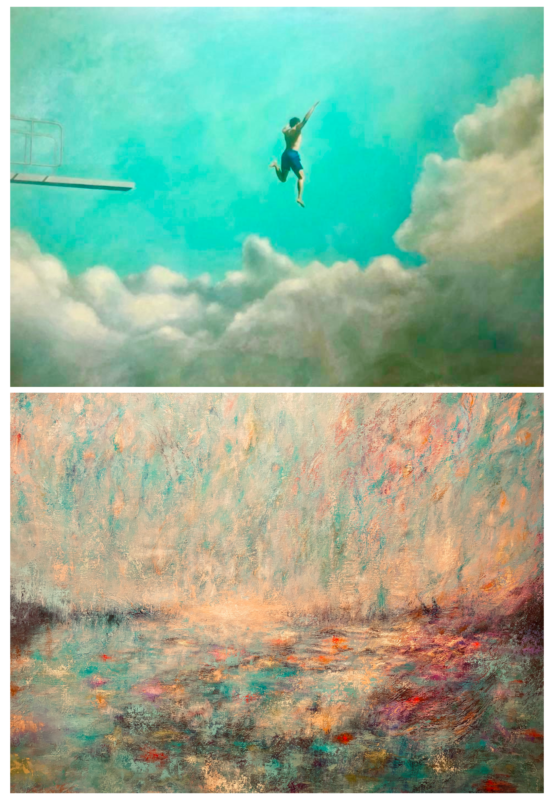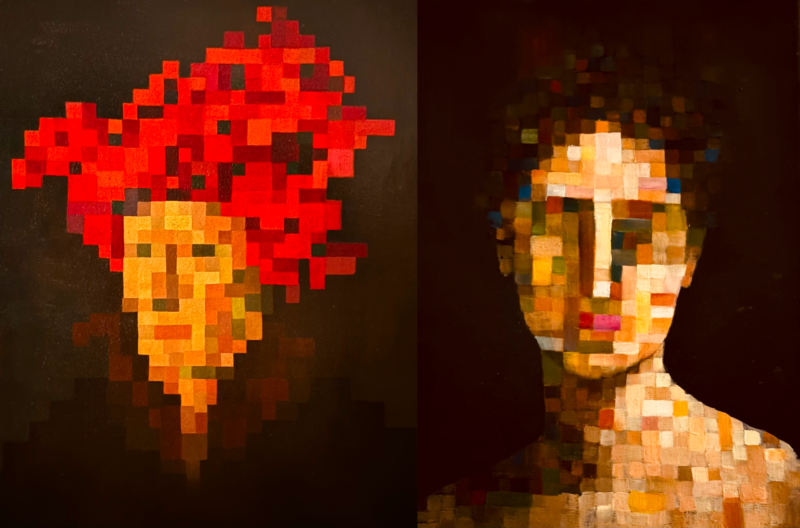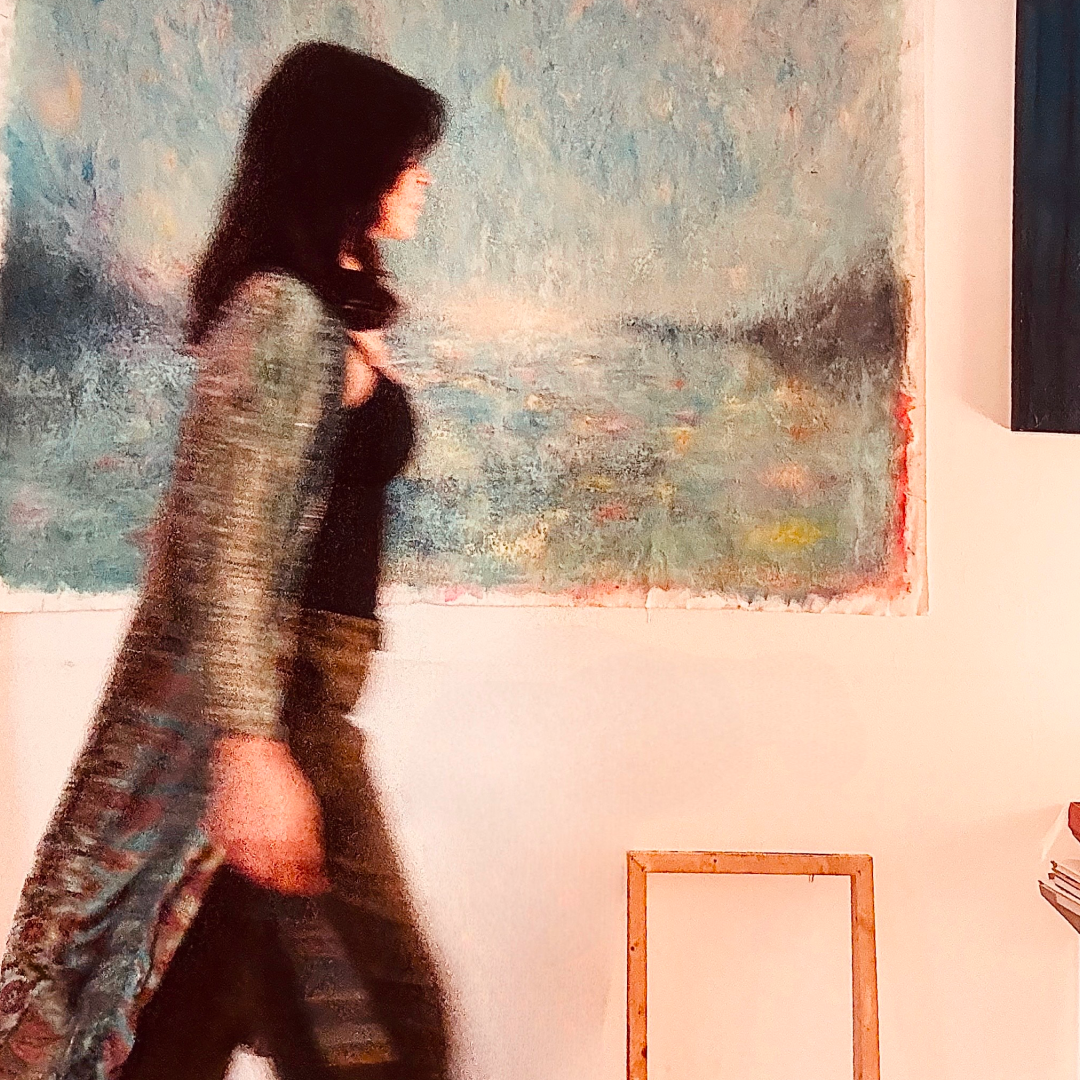Thea Torre is an Italian artist based in Puglia. Her paintings, though rooted in the pictorial tradition, do not reflect the world “as is,” but rather reshape it in numerous ways. With references to Old Masters and 20th-century modernism, they merge different layers of time and human experience.
In an interview for Fine Art Shippers, artist Verita Amare Et spoke with Thea Torre about the mission of the artist, inherent beauty, visual intelligence, and how creativity can help heal broken souls.
Artist Talk: Thea Torre on the Circadian Rhythms of Art
I see a rare combination of the creator's beauty, thoughts about life and art, and the quality of work. It's enjoyable to observe and provides a lot of food for thought. Thank you for this. At what age, and why, did you start drawing? How have your perception of art and the world evolved from early childhood to the present day?
Thea Torre: First of all, I thank you for this flattering description of me. Drawing has been part of my life for as long as I can remember. I believe that a form of visual intelligence, among others such as musical, linguistic, and logical-mathematical, is inherent in every human being from birth. Environmental factors and the right motivation then contribute significantly.
I have a very clear memory from my childhood: whenever I entered a new environment, I would look at the paintings hanging on the walls. Regardless of the subject portrayed, my gaze was captured by those two-dimensional windows. When I really liked a painting, I would look at it with such intensity that it seemed to become three-dimensional. There was something magical in what my eyes perceived that I couldn't explain.
What do your windows into the inner world reveal? Which one is the most expressive or your favorite?
The windows into the inner world essentially tell the various states of mind that alternate throughout human existence. For example, I have a series of paintings, created some years ago, where dark tones prevail. They represent the desire to seclude oneself in darkness for protection, to avoid exposure, and to not feel judged or attacked. Fortunately, it endows us with a certain audacity, enabling us to disregard the world and its biases. It's about making peace with yourself, with your past and your mistakes. When you forgive yourself you feel authorized to use brighter tones, more light, and more space.
To date I don't know what to prefer, it's all part of a single path. Dark and light are facets of the same existential sphere, both equally vital, resembling a sort of circadian rhythm. This is a form of anachronistic resistance for those like me who continue to believe that painting, despite being an ancient art form, still has something to say.

Why does the world need artists? Do artists have a mission, or is their role purely decorative?
According to today's architectural standards, wall decoration has become almost obsolete. Hyperminimalist, almost aseptic environments are designed. Today more than ever a pictorial or sculptural work must touch certain chords; it must convey messages and emotions and give food for thought.
When I am commissioned to do a job, I have a conversation with the client. I never ask them what subject they would like me to paint, but what sensations they would like to experience when looking at the wall on which the painting will be installed. So the characteristic of our time is not to embellish walls, but to make them speak.
Some painters simply copy natural phenomena and everything around them, realistically, yes, but is there any thought in this? How do you work?
Interesting question. In recent decades, in the pictorial field, we have witnessed the rise of the hyperrealism movement, characterized by an obsessive search for detail and photographic perfection. I do not deny that several years ago I also approached this pictorial movement, thinking that reproducing reality with the maximum definition of details such as that captured by the lens of a high-resolution camera was the maximum expression of contemporary painting. I worked alongside some exponents of this pictorial movement, tried to understand their secrets, practiced a lot, and obtained gratifying results. At the end of each painting, however, I felt a sense of emptiness and frustration. I had faithfully reproduced a photo, I had transformed into a human photocopier. I destroyed those works; they said nothing about me and the visual filter that exists between me and reality. Don't get me wrong, I have nothing against hyperrealism or those who practice this pictorial technique, I simply feel that it doesn't belong to me.
With what thought does work on a new image begin? What inspires you?
Each series or single work begins with a different source of inspiration, through the observation of the human being and his attitudes, his foibles, inclinations, and fears. In some cases, I was also inspired by dreamlike experiences. Through meditation practice and sleep, we are able to understand that our mind has infinite imagination capabilities and can perceive realities that we cannot see with our eyes open. Every human being has a divine spark and a universe to discover within themselves. You just need to use the right lens to see certain dimensions.
How do you feel about the work and perspectives of other artists?
I look with great curiosity at artists and contemporary art, at the different forms of communication and mediums such as installation, performance, video art, etc. In fact, this year too, I will return to visit the Venice Biennale, which always remains a very inspiring event.
There are those who say that everything has already been proposed in the artistic field; I don't agree. Today, a lot can still be said with any instrument.
The attention is mainly focused on the conceptual aspect rather than on the difficulty of carrying out the work, which can also be reduced to the simplest terms. One of the greatest contemporary artists uses stencils and monochromatic figures, but the message of those works, printed on the walls, is very powerful and universal.
What are you looking for in life? What brings you joy or sadness? To what do you pay attention every day? What matters to you, and what do you avoid?
I surround myself with very simple things in my life. Joy can also be found in small daily rituals: listening to music, seeing a beautiful exhibition, and reading a good book on the beach in late autumn, when the sand once again belongs only to seagulls and loners.
I am saddened by the threat of a future dominated by technology and artificial intelligence, which makes human intellect almost obsolete. But I'm pretty sure it's just my dystopian vision of the future.

Where have you lived, where would you like to live, and why?
I live in a nice town overlooking the Adriatic Sea, in Puglia, a region in the south of Italy. I have traveled around the planet that hosts us quite a bit, visiting many places. In some, I immediately felt at home; in others, I wouldn't go back, despite being happy to have visited them. To date, there is no particular place where I would like to live. I spend several days of the year in Florence, where there is still an interesting pictorial ferment, where I have friends to talk about art with, galleries to collaborate with, and interesting exhibitions to visit. In short, I could define myself as a sedentary nomad; at the moment I'm fine with that.
Time: past, present, and future. Do they exist distinctly for you, or do they all merge into one? What is your attitude towards the past and the present, and what are your plans for the future?
Past, present, and future are links in the same chain—everything is connected, but everything is different. The past influences what we are today; it is reassuring because it is a land already explored, we cannot change it, but we can learn a lot from it. Even the most innovative artist has been inspired, at least once, by the great masterpieces of the past. It is therefore undeniable that the past is a great master.
The present is the time to which I pay the most attention and dedication, it is the time in which we concretely have the power to build tomorrow's past and lay the foundations for the future through planning.
One of the projects I have in mind and hope to carry out in the not-too-distant future is establishing an artistic association aimed at children from less well-off families.
We are talking about children who do not have the opportunity to attend private courses, find themselves on the streets, and often commit acts of vandalism. Opening creative workshops for kids whose only language known is that of destruction can help give them a different vision of the world, show them that creating is more satisfying than destroying and that reaction and destruction are both part of the same creative process. The mission of the project is to make art a tool accessible to everyone, rather than something elitist.
Interview by Verita Amare Et Photo courtesy of Thea Torre
